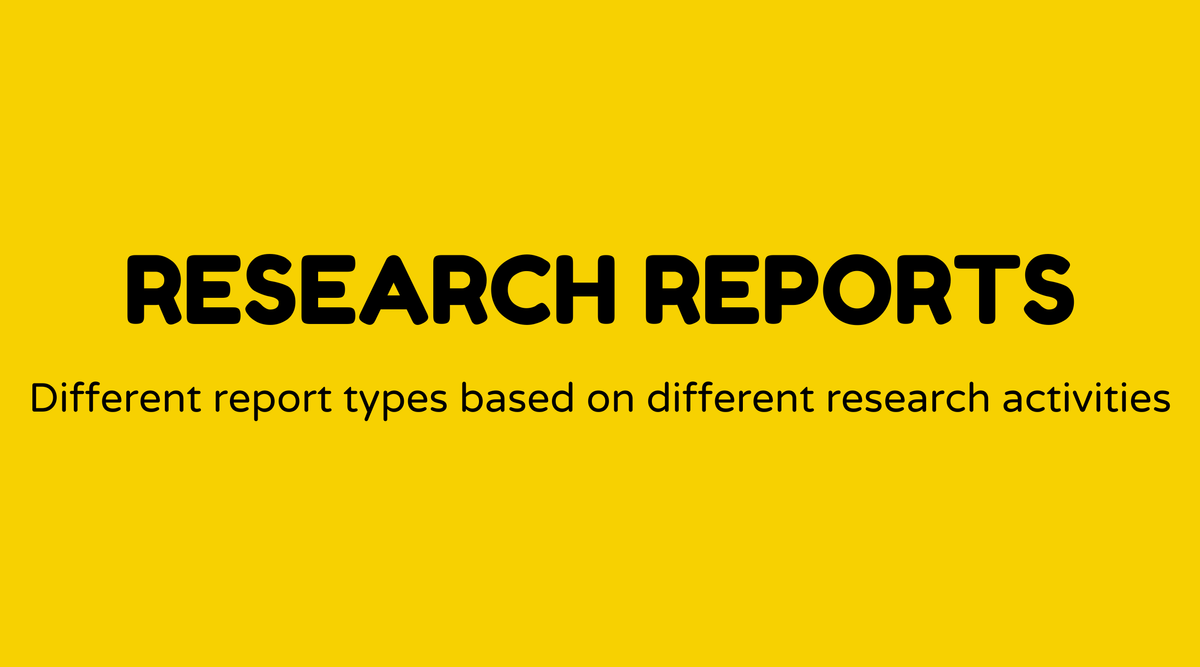Research reports

Overview of Research Reports:
Research is a multifaceted field that requires various methods to gather, analyze, and interpret data. Understanding the reports that arise from these different research approaches can provide a clearer view of the study's outcomes and their implications. In this article, we will discuss the importance, definition, and execution of reports from various research methods, alongside examples and a FAQ section to refine your understanding.
Why Research Reports:
Reports are the primary deliverables of research studies—they encapsulate findings, conclusions, and recommendations. They are essential because they convert raw data into useful insights that can influence decisions, strategies, and innovations across numerous fields.
For example, in academic settings, research reports contribute to the growth of knowledge and comprehension. In the business world, these reports inform product development, marketing strategies, and customer insights. In healthcare, research reports can impact clinical practices and policy-making.
What is a Research Report:
A research report is a formal document that presents the results of systematic investigations conducted using specific methods. Each approach—quantitative, qualitative, or mixed—provides a distinct perspective, yielding reports that emphasize different aspects of the subject matter:
-
Quantitative Reports: These focus on numerical data, using statistical analysis to present results. Examples include sales figures, survey responses, and test scores.
-
Qualitative Reports: These reports investigate non-numerical data, providing insights into attitudes, behaviors, and experiences. They often feature interviews, focus group discussions, and content assessments.
-
Mixed-Methods Reports: Combining both quantitative and qualitative techniques, these reports offer a thorough view by integrating numerical data with context and detail.
How to Create Research Reports:
Developing an effective research report involves several steps:
-
Planning: Establish the objective, audience, and format of the report. Select appropriate research approaches that align with your goals.
-
Data Collection: Gather data using the chosen methods. Whether through surveys, interviews, or experiments, ensure the process is systematic and unbiased.
-
Data Analysis: Analyze the collected data to extract meaningful insights. Employ statistical tools for quantitative data and thematic analysis for qualitative information.
-
Structure the Report: Organize the report into sections such as Introduction, Methodology, Findings, Discussion, and Conclusion. This layout ensures clarity and coherent flow.
-
Writing and Revision: Write the report in clear, concise language, avoiding jargon. Review and revise to enhance readability and correct errors.
Examples of Research Reports:
-
Quantitative Report Example: A study assessing consumer preferences by analyzing responses from a structured questionnaire distributed to 500 individuals.
-
Qualitative Report Example: A case study examining the effects of remote work on employee productivity, featuring interviews with employees from varied sectors.
-
Mixed-Methods Report Example: A report evaluating a new educational curriculum by combining test score data with feedback from teachers and students.
FAQs:
1. What are some common challenges in creating research reports?
- Challenges include data interpretation, maintaining objectivity, and presenting complex data clearly.
2. How long should a research report be?
- It varies based on depth and scope, but clarity is more crucial than length. Generally, a report should be as concise as needed while covering all essential aspects.
3. Can research reports be published?
- Yes, many reports appear in academic journals, industry magazines, or online platforms.
4. What tools can assist in creating research reports?
- Tools like SPSS or Excel for quantitative analysis, NVivo for qualitative analysis, and software such as Microsoft Word or Google Docs for report writing.
5. How do I choose the right research method for my report?
- It depends on your research question, available resources, and the type of data needed. Consider mixed approaches for a more comprehensive perspective.
6. Where can I find examples of well-crafted research reports?
- Examples can be found in academic journals, university libraries, or online databases like JSTOR or ResearchGate.



